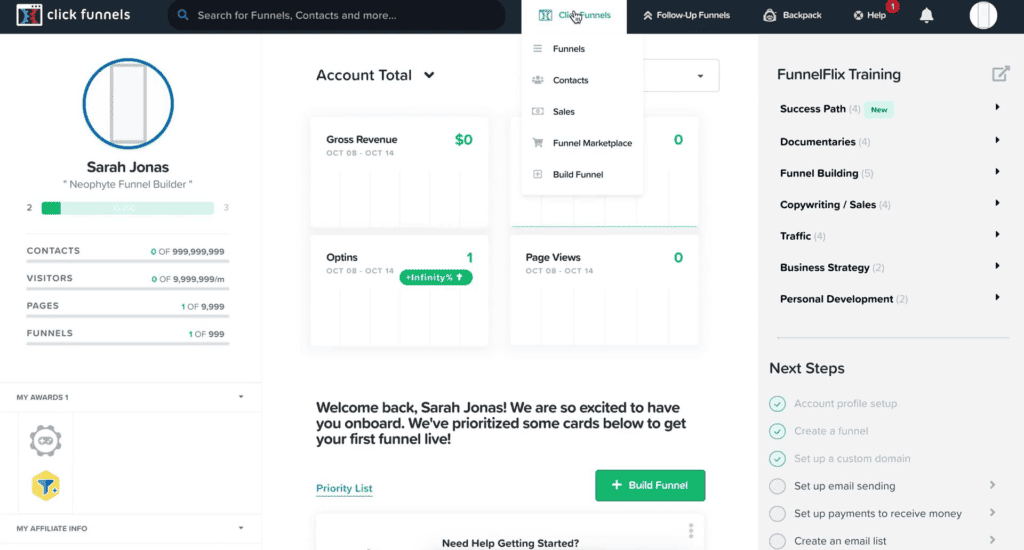Understanding Sports Marketing
Sports marketing is all about finding creative ways to tap into the thrill and excitement of sports to give products and services a big boost. It’s like using the fan fever surrounding favorite teams, athletes, and events to make some noise about what you’re offering.
Role of Sponsorships in Sports
Think of sponsorships as the backbone of sports marketing. Big and small businesses alike pour money into sports to get their brand noticed and forge a bond with sports enthusiasts who are likely to appreciate what they offer. When companies sponsor events, teams, or even individual athletes, they ride the wave of passion that sports generate, hoping some of that good energy boosts their brand image among fans, attendees, and the media.
Sponsorships come in all shapes and sizes—anything from a huge event sponsorship to an athlete slapping a logo on their jersey. Each type offers brands a chance to connect their message with the core values sports represent, reaching a bigger and diverse crowd.
Benefits of Sports Sponsorships
There’s a lot to gain from throwing your hat into the sports sponsorship ring. Companies latch onto these golden opportunities to meet several marketing goals:
| Benefit | Description |
|---|---|
| Perks of the Public Eye | Sponsorships can catapult brands into the spotlight through various media channels especially when paired with fan-favorite events like the Super Bowl. |
| Brand Buzz | Teaming up with well-loved sports can make a brand stand out and stick in people’s minds. |
| Mindshare Win | Sponsoring athletes or events helps companies plant themselves favorably in potential customers’ thoughts. |
| Sales Uplift | More visibility and positive vibes often lead to a nice bump in sales, thanks to smart sports marketing maneuvers. |
As more businesses seek out sports sponsorship opportunities, it’s clear that getting a handle on these partnerships is crucial for everyone involved in the sports biz who wants to boost their brand exposure and make more cash.
Want to see how it works in real life? Check out our section on sports marketing case studies for more insights.
Brands that nail their sports sponsorship strategies are in a prime spot to supercharge their marketing game and form lasting bonds with their audience.
Effective Sports Sponsorship Strategies
Sponsorships are like the secret sauce in sports marketing, where brands get cozy with the audience. Team bosses, event planners, and sports companies need to figure out how to get sponsors in the mix to boost their presence and cash flow.
Options for Sponsor Involvement
Here’s a glance at four main ways sponsors can jump into the sports scene:
| Sponsorship Type | Description | Example |
|---|---|---|
| Team Sponsorship | Brands buddy up with sports teams, splashing their logos on jerseys and marketing gear. | Nike teaming up with a pro football squad. |
| Event Sponsorship | Companies back sports events, snagging the spotlight with ads during the event. | Coca-Cola jumping in on the FIFA World Cup. |
| Athlete Sponsorship | Brands link with athletes to push products, riding the wave of athlete star power. | Gatorade chucking its name in Serena Williams’ ring. |
| Digital Sponsorship | Brands harness social media to join forces with athletes and teams. This has shot up in importance since social media and the Name, Image, Likeness (NIL) rule, letting athletes cash in on their online stardom. | Companies hawking gear through influencers like gymnast Livvy Dunne, who banked $3.6 million in 2023 from shout-outs (Sprout Social). |
Social media has flipped the sponsorship game, letting brands tune in with fans and push products in fresh ways. With athletes’ online followings, brands can whip up sponsorship deals that click with younger crowds, juicing up fan love and loyalty.
Knowing these routes helps sponsors pick a lane that hits their marketing targets. For teams and organizations, checking out sports sponsorship gigs can plug into new cash and showtime. Plus, peeking at winning sports marketing plays might spill some secrets on how to nail that sponsor-fan connection.
Leveraging Social Media in Sports Marketing
Sports marketing has really taken a wild turn thanks to social media. Facebook, Twitter, Instagram, and TikTok have become the go-to spots for sports brands to mingle with their fans. Let’s chat about how these platforms pump up fan excitement and their overall impact on sports marketing.
Power of Social Media in Sports
Social media’s like a hotline linking sports teams straight to their fans. They toss out cool stuff like behind-the-scenes clips, exclusive chats, and crucial game updates (Yellowbrick).
Players too hop on platforms like Instagram and YouTube, showing off their personal side and vibing directly with fans. This makes fans feel closer to the teams and athletes, boosting their loyalty.
Impact on Fan Engagement
Fans’ interactions on social media are a big deal for sports marketing. Check out this table with some fun facts about how fans connect with athletes and sports teams online:
| Social Media Interaction | Percentage of Fans |
|---|---|
| Following athletes on social media | 39% of folks in the US |
| Following sports leagues on social media | 39% of folks in the US |
| Likelihood of live-streaming events (ages 18-24) | Twice as likely |
Social media’s also opened the door for sponsorship deals. Brands team up with influencers and athletes to show off their stuff in sponsored posts (Yellowbrick). This approach spreads marketing efforts wider and cuts costs (Greenfly).
When sports teams use social media smartly, they get noticed and keep fans hooked. To check out some winning engagement plays, take a gander at our piece on sports marketing demographics and why sports fan segmentation matters.
Successful Sports Marketing Campaigns
Sports marketing is like the secret sauce that grabs fans’ attention and puts brands in the spotlight. Here, we’re shouting out some clever campaigns that have really clicked with folks and made a splash.
Notable Marketing Examples
Let’s peek at a few sports campaigns that got people buzzing and had them coming back for more fun.
| Campaign | Brand | Description | Key Metrics |
|---|---|---|---|
| Pelé’s Puma Campaign | Puma | At the 1970 FIFA World Cup, Pelé paused to tie his Puma shoes, grabbing all eyes—and cameras. | A major early example of going viral in sports (Greenfly) |
| This Girl Can | Sport England | Kicked off in 2015, this pushed for women in the UK to get active, proudly showcasing various body types. | Watched over 8 million times post-campaign (Greenfly) |
| Thank You, Mom | Procter & Gamble | Paid tribute to the mothers behind athletes at the 2012 Summer Olympics. | Stirred up over 74 million reactions online (Greenfly) |
| What’s Your Goal? | Chicago Blackhawks | Invited fans to share their personal aims online using #WhatsYourGoal. | Made 46 million Facebook users sit up and notice (Greenfly) |
These campaigns show that hitting the emotional notes, using social media smartly, and sticking to familiar vibes are the way to connect with people.
Creative Collaboration Strategies
When brands buddy with sports teams, magic can happen, sparking fresh marketing ideas.
Take the 2017 collaboration between the Seattle Seahawks and Starbucks. This dream team churned out joint branded items like player jersey-themed gift cards. They jazzed up cup sleeves with big-name players’ signatures and Snapcodes to scan for exclusive Snapchat goodies. This clever mesh of brand and fan play not only fired up the fans but showed off the strength of local teamwork (Greenfly).
These brilliant strategies usually revolve around one-of-a-kind partnerships and cool ways to engage people. By playing to their strengths, brands cook up experiences that stick in fans’ minds, boosting visibility and keeping fans hooked. For more scoop on sports marketing whizzes, dive into our piece on sports marketing campaigns and chew over the creative branding tips in sports branding techniques.
Social Media in Sports Marketing
Social media’s been quite the game-changer in sports marketing! It’s not just athletes lobbing balls—we’re talking about building fan armies and giving everyone a backstage pass. These platforms are like VIP tickets to the locker room, getting fans up close and personal with teams and players.
Role of Social Media Platforms
Think about the likes of Facebook, Twitter, Insta, and TikTok. They’ve flipped the script on how sports folks and their die-hard fans can chat it up. It’s like a digital hangout where you can catch behind-the-scenes bloopers or snag those juicy game updates. This all results in fans who stick around and rally for the team like a human wave at a stadium.
And then there are platforms like Instagram and YouTube where athletes become their own hype men and women. They shout out to their followers, building a bond that isn’t just about looking good in the feeds but keeping that fan flag flying high. And let’s not forget, this kind of tech magic stretches all across the globe. The NBA, for example, has cheerleaders in the U.K., Germany, and China—more folks there waving banners than even in the USA. Now, that’s some reach!
Fan Engagement Strategies
Connecting with the fanbase is not just a ‘nice to have’—it’s a ‘gotta do’. Since back in the early 2000s—back when everyone was obsessed with flip phones and boy bands—engaging fans online became as important as the game itself. Sports clubs, leagues, and big-time national bodies can’t afford to miss out on this now.
Here are some snazzy ways to fire up fan talk on social media:
| Engagement Strategy | What’s It About? |
|---|---|
| User-Generated Content (UGC) | Get fans to drop their own cool pics and facts about the team. It’s like the scrapbook every superfan loves, only everyone can see it. |
| Live Streaming Events | Think Instagram Live or Facebook Live straight from the locker room or player hangouts. Or even go live with epic moments from the game. |
| Contests and Giveaways | Dangle a carrot! Host contests where fans can grab goodies or bragging rights for promoting their team. |
| Interactive Polls and Quizzes | Fire up some polls or quizzes on Instagram Stories to get fans to spill the beans on what they love or want. |
Sports organizations leveraging these strategies do more than just keep fans on the edge of their seats—they make them part of the story. It cranks up the marketing volume, letting teams reach far and wide while amping up the fan-team bond. If you’re itching for more on how big-league marketing can win fans over, check out the full scoop in our article on sports marketing campaigns.
Enhancing Fan Engagement in Sports
Importance of Fan Engagement
Fan engagement is like the secret sauce for sports organizations. According to a study by iSportConnect and Choicely, a whopping 71% of sports professionals think it’s crucial for hitting those big goals (Choicely). When fans are hooked, they’re not just more likely to show up, but they also help beef up the revenue. Deloitte research points out that “fanatics” shell out six times more dough each year compared to the casual crowd. Plus, those with season tickets spend quintuple compared to those without.
Engagement is about creating a bond with the brand, which fuels loyalty for the long haul. Fans who feel a connection have a 306% higher lifetime value than those feeling meh about it. This connection paves the way for more ticket sales, more swag buying, and plenty of good vibes spread through word-of-mouth. With 92% of folks trusting friends and family over other marketing stuff, engaged fans are basically walking billboards, boosting the fan count (Choicely).
Building Customer Loyalty
Locking in customer loyalty in sports goes hand-in-hand with amping up fan engagement. One solid way to check customer happiness is using things like the Net Promoter Score (NPS). This handy metric links up with upsell revenue and overall growth. Tuning into fan feedback and keeping the conversation flowing tightens the bond between sports brands and their fans, cranking up loyalty.
When fans are all in, they’re chatting about their experiences, which might just pull in new recruits through word-of-mouth magic. This natural fan growth is worth its weight in gold. Sports marketing that’s all about interaction and engaging content can supercharge this effect. Look at Nike—they use sports stars and killer stories to reach audiences and pump up engagement (Constant Contact).
Bringing in these sports marketing moves, focusing on fan chats, emotional ties, and checking satisfaction scores not only pumps up engagement but cements customer loyalty in the sports game.
Modern Trends in Sports Marketing
In the fast-paced zone of sports marketing, staying on top of your game means rolling with the latest trends and making the most of digital tools. This isn’t just a suggestion for the big shots like team managers or event organizers, but also for the brand peeps selling sports gear. So, let’s have a gander at what’s shaking up the sports scene right now.
Emerging Strategies
Sports marketers have their ears to the ground, tuning in to changing vibes in consumer habits. As TV’s popularity dips and women’s sports shine brighter, marketers need to pivot their playbook. With young folks, especially, turning to YouTube for their sports fix, digital beats TV hands down Constant Contact. Back in 2021, a whopping 90% of Millennials said bye-bye to TV and hello to YouTube for sports (Little Dot Studios).
Social consciousness is also dribbling into the game, as people now prefer supporting athletes from all walks of life. This wave is guiding brand campaigns and keeping them in the loop with the crowd. Brands have a chance to get on new fans’ radars and build some loyal connections.
| Trends in a Nutshell | What’s Going On |
|---|---|
| Digital First | Young fans are glued to screens, steering sports content to online spots. |
| Women’s Sports Rising | More spotlight on the ladies’ side of sports as fan bases diversify. |
| Fans’ Active Role | Fans are in players’ corners, making noise for wider representation. |
Leveraging Digital Platforms
Digital spots are the front and center of today’s sports marketing hustle. With fans camping out on Facebook, Insta, and TikTok, sports teams and brands are scoring points by connecting through these outlets Yellowbrick. Nailing social media means not just waving the brand flag but also keeping the fan base close.
Online channels offer a buffet of goodies for keeping fans tied in, from sneak peeks to live updates and interactive shenanigans. This kind of real-time chit-chat helps sports teams to bounce back with feedback or just spread some positive vibes. Keeping fans engaged is all about building a squad around your event or brand.
| Social Playbook | What Works |
|---|---|
| Sweet Content Drops | Keeping fans in the loop with cool and engaging content. |
| Fun Polls | Using surveys and polls for fan feedback and to catch their drift. |
| Live Streaming Action | Bringing the event straight to homes, making it a part of their world. |
To keep ahead, sports marketers are riding these trends and hooking fans in the here and now. These fresh strategies are chances to design standout campaigns that click with today’s sports fans. For more on this, check out what we’ve got on sports marketing campaigns and sports sponsorship opportunities.
Purpose-Driven Sports Marketing
Purpose-driven sports marketing is about getting brands to team up with social and environmental causes, building real bonds with people. This trend is more than just good talk; it’s about businesses showing they care about their community and not just their wallets.
Impactful Social Initiatives
Instead of sticking to old-school advertising, brands are leaning towards campaigns that really mean something. It’s about proving they care for real and tackling some big issues head-on (SportsPro).
Studies show that folks are more likely to root for companies that stand up for social causes. How these programs do in the real world tells you if they’re hitting the mark. Are they really getting people involved and making a difference in the community? Here’s a quick look at what makes a social impact initiative tick:
| Key Factors | Description |
|---|---|
| Authenticity | Real dedication to causes, not just for show. |
| Long-term Commitment | Keeping at it over the years to make a real difference. |
| Thoughtful Planning | Thinking through campaigns to meet the community’s needs. |
| Integration | Making sure these moves align with the brand’s mission. |
Creating Brand Relevance
When brands keep it real, these cause-driven campaigns do wonders for how people see them. It’s all about standing out, winning folks’ trust, and catching the eye in a sea of competitors. If done right, these strategies pave the way for future growth (SportsPro).
To make sure their efforts connect with people, brands should think about:
| Strategy | Description |
|---|---|
| Long-term Partnerships | Building lasting bonds with community groups. |
| Measurable Goals | Setting clear goals and seeing how they stack up. |
| Stakeholder Alignment | Making sure everyone involved is on the same page. |
When it comes to getting noticed, awards and indexes look at things like authenticity, creativity, and being upfront about efforts like the Laureus Sport for Good Index (SportsPro).
Prioritizing social impact not only makes brands trustworthy, but it also gives them an edge. Businesses can hit a home run with these strategies, forming lifelong relationships with fans and staying true to what they stand for.





















